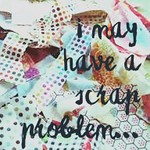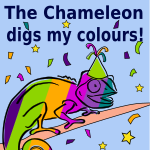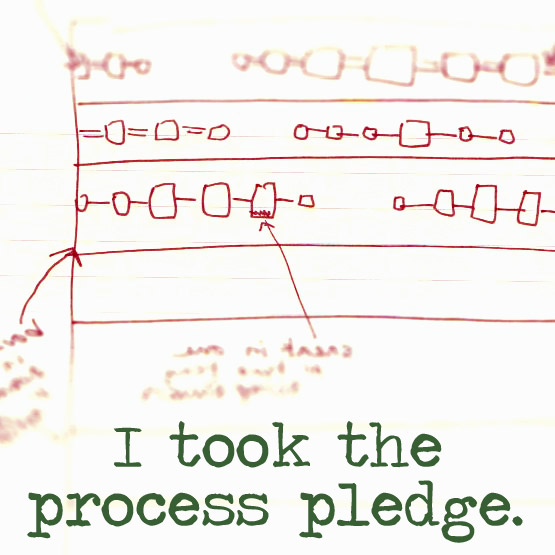Buried among my orphan blocks were these strips of squares. It amazes me how almost modern the print, and the setting is even gray.

They have a long history, only part mine. They lived in a basement among other sewing things, as squares, not strips. I don’t know how long they had been there, but they smelled musty, so much so that I got accused of smoking (in a non-smoking apartment) when I pressed them. The owner of the house was moving to a nursing home, and her relative, who was in my guild, was giving out the UFOs. This was at least ten years ago.
I took them along to a retreat as a filler in case I finished other projects faster than expected; sometimes it happens. I did, so stitched the squares into these strips. It was before rulerless cutting was in vogue, but these irregular squares appeared to have been cut without a ruler or marking. Add to that my inexperience at machine piecing (hand piecing comes out right because you sew on the seam line) and irregular 1/4 inch seams, the strips were quite wobbly.
So they sat, waiting for me to trim them straight and do something about the bubbles. Also they needed something to double them to make an adequate sized quilt.
They were sitting out when a member of Sunshine (link in the sidebar under quilt groups) issued an Olympic challenge–make a quilt using the Olympic colors while watching the Olympics. Noting that the colors in the print were all the colors except black, I started to plan.
Instead of trimming to straight edges, I decided to use Sherri Lynn Wood’s curved seam approach to the irregular edges and darting to control the bubbles.
And I ended up with this.

Close to 40 x 60
If I can find my black, I’ll border and bind it in black. The border is needed because darting shrank some strips to 39 1/2, and that is without quilting or binding seams.
Now, about sewing curves. As you can see, these are quite gentle. I marked match-points on the first seam and noticed that they always met. So I didn’t mark any more, nor did I pin other than the first pin so that I’d start in the right place. I didn’t have to redo any seams.
Now we are told that it is easier to stitch when the concave curve is on top. In the past when I had S-curves I’d even start twice so that both halves could have concave on top. But on these gentle curves I didn’t bother. Yes, it is a little harder with the convex on top, but I developed a trick or two as I progressed.
This is one time to watch the needle. Even half an inch before the needle is too far away to match edges. I stitched till the two fabrics diverged to almost make a V at the needle, then with needle down, slid them gently together. Sometimes I had to repeat this every 3 or 4 stitches until I got around the convex spot.
Another thing I have read is to lift the top fabric high to aid in matching. I did not find that necessary. What is necessary is to handle the top and bottom fabrics separately, sometimes one in one hand and one in the other. Maybe lifting the top one high helps some to handle them separately, but I found it the dual handling that matters.
Occasionally at really tricky spots, I used a stylus (well, I never bought an official stylus, I just used my seam ripper) to hold the two edges in place near the needle.
One caveat: I don’t know how sharp a curve will prevent my method from working. I’ll keep using it till it doesn’t work and report back.
About the yellow curves. Here is a slightly better photo with them out of the fold of the sofa.

At first I was going to sew straight strips, but it seemed better to continue with curves. For the first seam, I cut the blue and yellow together. Stitched. Then pressed away from the fabric that would become the narrow strip (toward navy in this top). I cut the fabrics for the second seam separately. I cut the yellow irregularly in what looked like pleasing variations. Where I wanted the yellow to disappear, I made sure to cut only 1/4 from the previous seam. Then I used the yellow as pattern to cut the navy.
Now to go hunt the errant black fabric.















This is great! How fun! I loved reading about your process. I hope you find your black.
P.S. Beth has a ton of black. Ask her for some. Maybe tonight, while she’s tipsy, would be a convenient time to ask. LOL
I love your process of making a virtue out of wonky 🙂 I find it doesn’t really please my eye in my own projects, but the tips on sewing curves will always come in useful!
How interesting. I never know what I’m going to find just by reading the title of your posts. LOL This looks like a great experience to further piecing knowledge, and make something useful at the same time. Are you trimming that right edge, or sewing it on just as it is? Making a curve out of it, maybe?
My tentative plan is to make a border, curving where attached but cutting the outer edge straight.
They lived in the basement?!?! This sounds like the makings for a horror story: Don’t Go In The Basement (old musty quilting strip UFOs will attack you!). But seriously, enjoyed reading your adventure/process.
Good tips for sewing curves. I still have trouble with concave and convex though! And what a finish! This should be some kind of record – and what is old is new again.
A very creative (and modern) solution!
A stunning quilt. Thanks for all the curved piecing tips.
Pingback: Quilting and hacking | Isabel Evans – consultancy stories
I’m tickled that you turned old squares into a modern quilt! 8)
Ooh, those yellow inserts are fun! I’m going to save this idea!